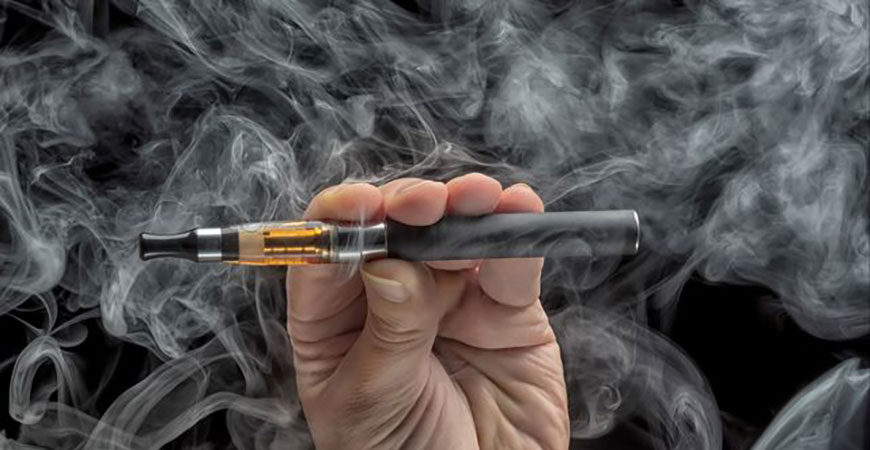
In addition to being used recreationally, marijuana and cannabidiol, or CBD, one of the cannabinoids produced by the marijuana plant, are thought to have medical benefits such as helping with chemotherapy-induced nausea, treating epilepsy, relieving pain and helping with a variety of mental health issues.
But how people get cannabinoids into their bodies can make the difference between helping and hurting. A new study by Department of Chemistry and Biochemistry Chair and Professor Ryan Baxter and colleagues shows that conditions common to vaping marijuana or CBD oxidizes the CBD to create cannabidiol hydroxyquinone or CBD-Q. This highly toxic chemical kills human tissue.
Baxter and chemical and materials engineering professors Kara McCloskey and Roberto Andresen Eguiluz, both affiliated with the Health Sciences Research Institute, have been studying the safety profiles of components in commercially available vape cartridges to identify hazards and develop mitigation strategies.
“Under certain conditions, the cannabinoids metabolize into really toxic byproducts,” Baxter said. “We have shown how that happens, why that happens and how we could prevent it. If people are going to do it anyway, could we develop an additive that prevents the formation of the toxic byproduct and protects people's lung tissues?”
The study demonstrates how storage conditions and usage vehicles degrade CBD and how QBD-Q kills cells. But the researchers have yet to conduct cell studies to identify the pathways and how CBD is metabolized by cells. Future studies will focus on how vaping conditions impact CBD stability and its degradation into toxic byproducts.
They've detailed their findings in a paper published in the journal Chemical Research in Toxicology, put out by the American Chemical Society.
Marijuana is legal in many states, and most states have no regulations regarding CBD use. Many popular brands of marijuana vapes are sold in dispensaries, and CBD vapes are commercially available in many stores, including gas stations. They're easy to use, easy to carry, produce little to no smoke and often come in tempting flavors.
But with heat and oxidative stress — conditions created when someone sucks on a vape — CBD decomposes into CBD-Q. This chemical has been used in targeted therapies to destroy malignant tumors.
“I wouldn't imagine you would want it just bathing your lungs,” Baxter said.
When someone burns the marijuana plant, several chemicals are naturally present that take some of the oxidative stress off the cannabinoids, including CBD.
“But when you add CBD to an oil suspension and put it in a vape pen, all the oxidative stress is focused on that one chemical,” Baxter said, “so it's actually way worse in that setting. This context is very important because vape cartridges contain high levels of CBD and it doesn't need much heat to degrade into CBD-Q, although some cartridges heat to 200 to 300 degrees.”
While CBD on its own appears to be non-toxic, the researchers also found that how it is stored contributes to the amount of CBD-Q produced.
“Luckily, most of the CBD is stored in oil-based suspensions that protect it from oxidative stress. But a new thing I've seen is adding CBD to beverages, such as sodas or alcoholic drinks,” Baxter said. “Those are water- or ethanol-based, and under those conditions, you end up producing more of this toxic byproduct, just upon sitting. And these things are not regulated at all by the FDA.”
This research project was conducted without outside funding; however, Baxter hopes to continue the work and investigate how vascular tissue is affected by cannabinoids with a grant he has applied for through the Center for Medicinal Research in Cannabis at UC San Diego.
His lab is licensed with the federal Drug Enforcement Administration to research cannabis but isn't typically involved with research into chemical compounds for vape cartridges. When Baxter saw this result, he also saw an opportunity to help make vaping safer.
“If we could discover a chemical that we could tell industry they should put in the vape cartridges to protect their consumers, I feel like industry partners would see the opportunity to advertise it as a safer product,” he said.



